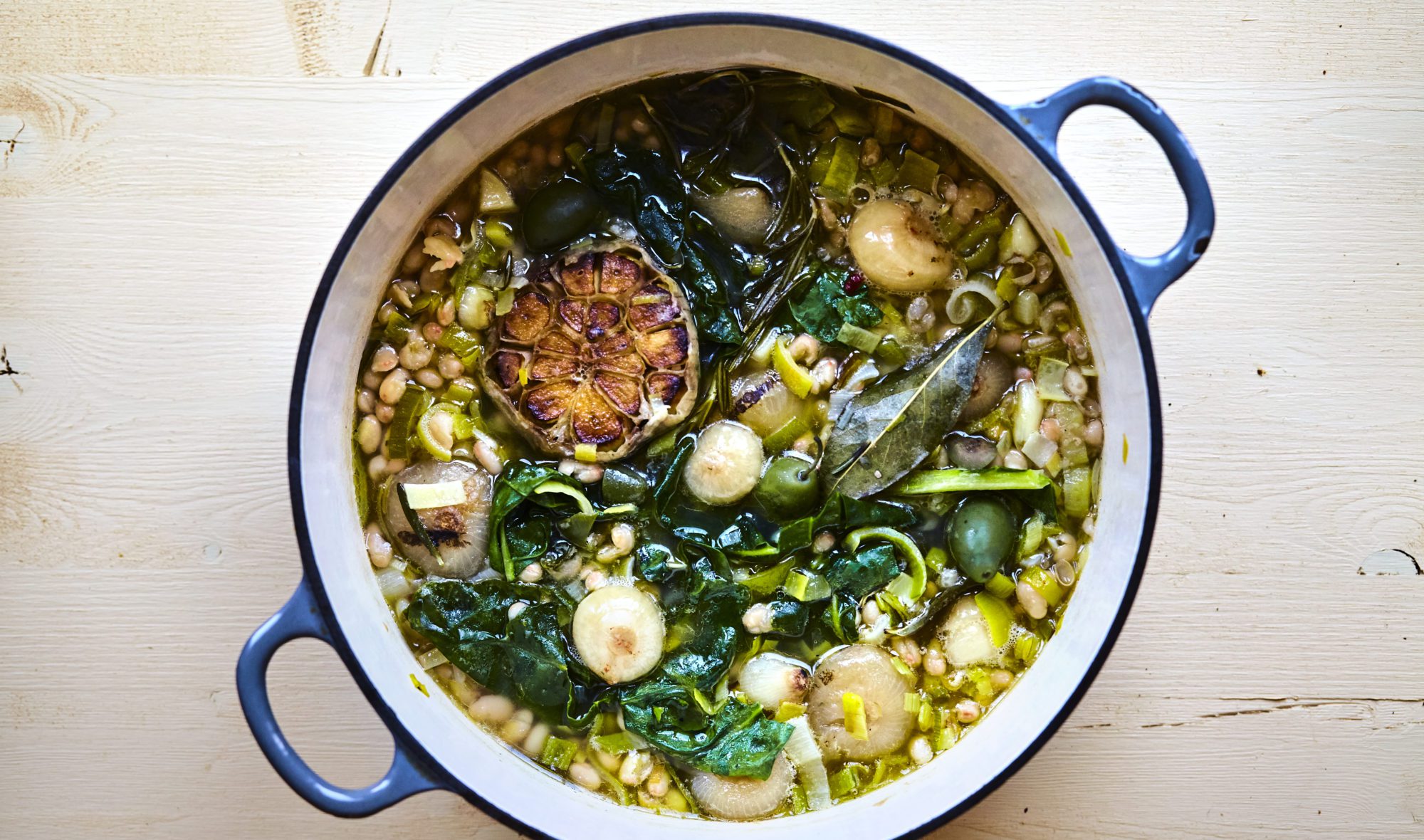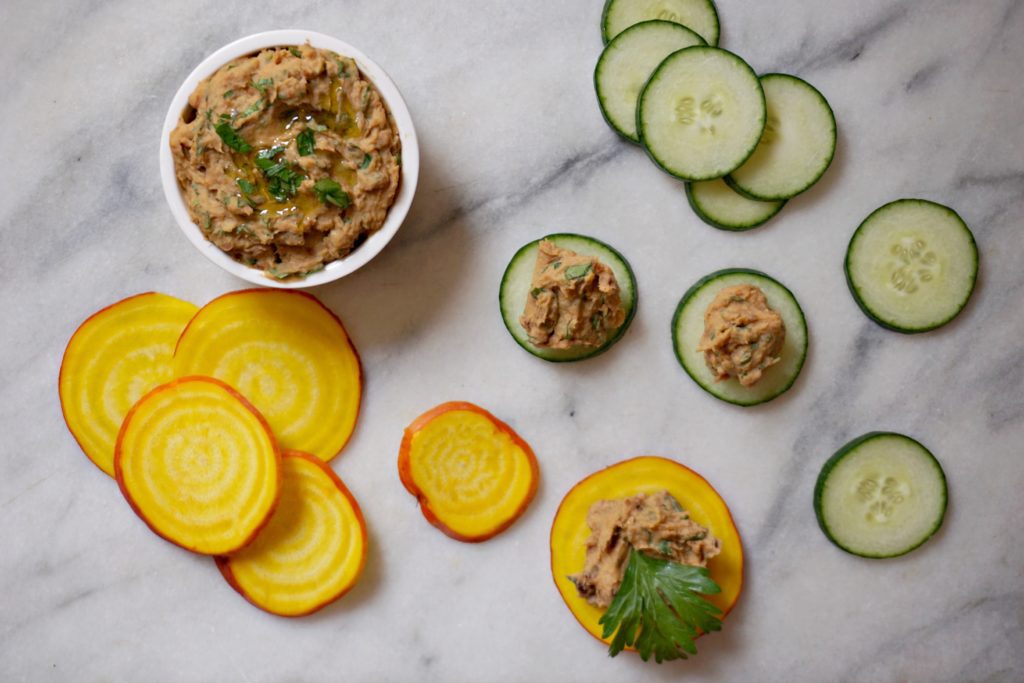Navy Beans


The navy bean is a pearly white pea-shaped bean. It got its name because it was a staple food of the US Navy in the early 20th century. Navy beans are part of the Phaseolus vulgaris family, also known as the “common bean” family. Due to their creamy white color, navy beans are sometimes confused with other white beans such as great northern beans, cannellini beans, or white kidney beans. A quick tip to differentiate them: Navy beans are smaller and rounder than all of them. Navy beans have a soft, velvety texture and a slightly nutty taste, and like other legumes, are a fantastic source of fiber. They are also a good source of folate, manganese, and copper. Due to their relatively neutral taste, navy beans are adaptable to a variety of recipes - they can even hide quite deliciously in a cake!
The navy bean is a pearly white oval-shaped bean. It got its name because it was a staple food of the US Navy in the early 20th century.
Navy beans are part of the Phaseolus vulgaris family, also known as the “common bean” family, which includes kidney beans, pinto beans, and cannellini beans. It is assumed that all of the cultivars from this family originate from one ancestor originally native to South America. Spanish explorers eventually brought them from the Americas to Europe, and then to Asia and Africa.
Due to their creamy white color, navy beans are sometimes confused with other white beans such as great northern beans, cannellini beans, or white kidney beans. Although their taste is similar, navy beans are smaller and rounder than these other varieties.
Navy beans are small, oval-shaped and creamy white in color. When cooked, navy beans are creamy and starchy, with a soft, velvety texture.
Due to their neutral, slightly nutty taste, navy beans are adaptable to a variety of recipes, even desserts!
One cup of navy beans (about 182g) has 255 calories, 15.0g of protein, 1.1g of fat, 47.4g of carbohydrates, 19.0g of fiber, and 0.7g of sugar. Navy beans are a good source of folate, manganese, and copper.
Both dried and canned navy beans are widely available at most grocery stores and bulk food stores.
If buying dried beans, look for beans that look dry, evenly colored, and are free of cracks. When shopping in bulk, choose stores that have covered bins.
If buying canned beans, read the ingredients. The healthiest choices will have a short ingredient list and contain little more than beans, water, and perhaps salt.
Dried beans should be stored in a cool, dark, and dry place, where they can stay fresh for up to 12 months.
Canned beans should have an expiration date on the package, so follow that to inform you of freshness.
Cooked navy beans should be stored in an airtight container in the fridge. Stored thusly, they will stay fresh for three to four days.
Beans can also be frozen. Stored in an airtight container, they will freeze well for four to six months.
Canned navy beans are cooked and ready to eat after a quick drain and rinse. This removes the starchy canned bean water, as well as any excess salt.
Dried navy beans must be cooked and require a little more effort. We recommend cooking in large batches and freezing the excess in portioned containers for later use.
How to cook dried beans:

This plant-based navy bean paté is highly flavourful and versatile - it can be eaten as a dip with raw veggies, spread on a sandwich or wrap, or even added to tacos.
Prep Time: 10 minutes Cook Time: 20 minutes Yield: 4-6 servings
First, caramelize the onions and garlic: In a skillet over medium heat, add olive oil and heat until it begins to shimmer. Add onions and garlic, and stir. Over the next 20 minutes or so, allow the onions and garlic to cook gently, largely untouched except for the occasional stir to prevent burning or sticking. Adjust the heat if the onions are burning too quickly, or do not seem to be browning. The mixture will be done when golden brown and sweet smelling.
To make the paté, add caramelized onions and garlic, as well as navy beans, salt, and sun dried tomatoes to a food processor. Process until mostly smooth. You can leave a little bit of texture if you want.
Scoop out navy bean puré and fold in minced parsley, then place in a bowl. Serve with your choice of veggies or add to sandwiches, wraps, or tacos. Store leftovers in the fridge in an airtight container for up to 4 days.
Precision Nutrition’s Encyclopedia of Food expands every single month as we highlight new foods and showcase beautiful food photography. If you’d like to stay up to date, simply click this link. From there, we’ll send you a FREE copy of our recipe book. We’ll also let you know when new and delicious foods are added to the site.
The navy bean is a pearly white pea-shaped bean. It got its name because it was a staple food of the US Navy in the early 20th century. Navy beans are part of the Phaseolus vulgaris family, also known as the “common bean” family. Due to their creamy white color, navy beans are sometimes confused with other white beans such as great northern beans, cannellini beans, or white kidney beans. A quick tip to differentiate them: Navy beans are smaller and rounder than all of them. Navy beans have a soft, velvety texture and a slightly nutty taste, and like other legumes, are a fantastic source of fiber. They are also a good source of folate, manganese, and copper. Due to their relatively neutral taste, navy beans are adaptable to a variety of recipes - they can even hide quite deliciously in a cake!